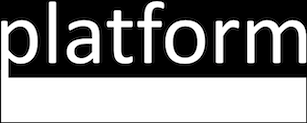The Proposal
1. Build a Self-Screening Funnel
- Step 1: Pre-Application Engagement
- Include a short introduction video about the company and role to educate candidates upfront.
- Require candidates to complete a brief quiz or answer specific questions to verify their understanding of the role and company values.
- Step 2: Application Filtering
- Automate screening questions within the application process to gauge qualifications, motivation, and alignment with company values.
- Step 3: Automated Skills Assessment
- Integrate a task or short project related to the job (e.g., write a sample email, solve a simple case study, or complete a brief task in relevant software).
- This step ensures candidates who proceed have the skills and commitment required.
- Step 4: Personal Commitment Check
- Ask candidates to record a short video introducing themselves and explaining why they want the job. This filters out those unwilling to invest time in showcasing their interest.
2. Automate for Efficiency
- Use AI and automation to guide candidates through each stage without manual involvement:
- Auto-grade quizzes and assessments.
- Pre-screen video submissions using AI tools for keyword alignment or tone matching.
- Trigger follow-up emails to move qualified candidates to the next stage seamlessly, keeping them engaged and informed.
3. Evaluate Only Qualified Candidates
By the time candidates reach the final stage (e.g., interviews or direct evaluation), they’ve demonstrated:
- Skills: They completed job-specific assessments.
- Commitment: They invested time and effort in the process.
- Cultural Fit: Their answers align with your company’s mission and values.
Why This Works
- Self-Elimination: Unqualified or uninterested candidates naturally drop out, reducing wasted time for your team.
- Higher Quality Applicants: Only those serious about the role and capable of meeting expectations will make it through.
- Cost-Effective: Automation minimizes manual effort while ensuring thorough screening.
- Streamlined Process: The structured funnel ensures every step adds value to both the candidate and the company.
Conclusion
By creating a longer, automated, and engaging hiring process, companies can attract motivated candidates while filtering out those who aren’t a fit—all without spending extra time or money. This approach ensures only the best and most committed applicants move forward, making the process efficient and effective for both the business and the candidates.
Let’s build a smarter hiring process that works for everyone!
